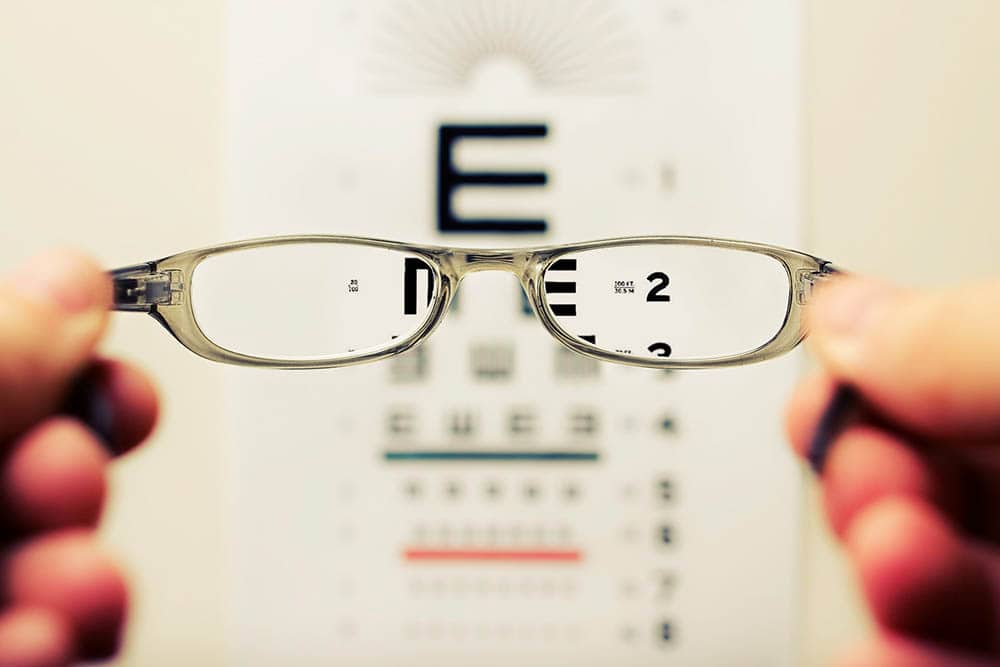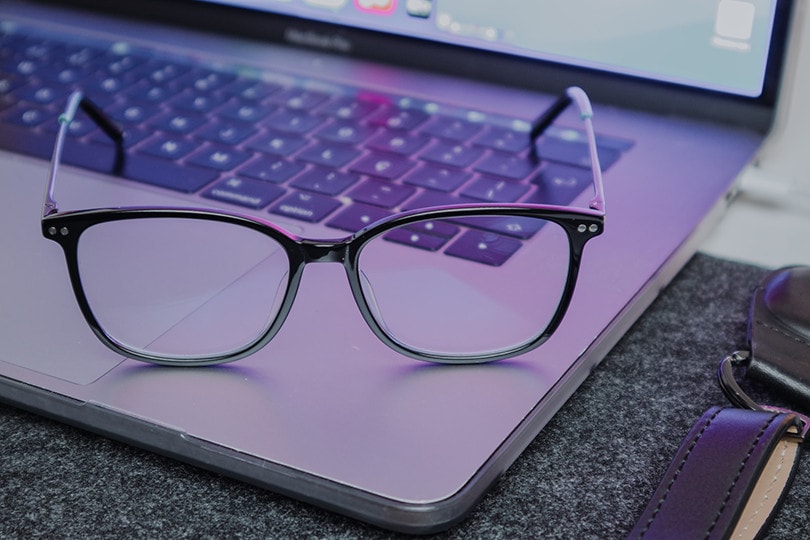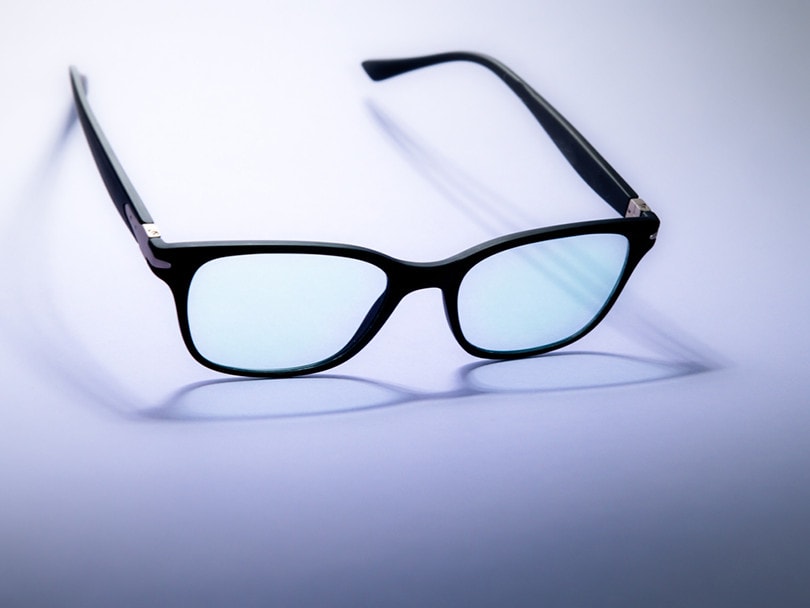Are There Prescription Reading Glasses?
Last Updated on

Have you ever bought over-the-counter reading glasses and found them useless? These glasses usually do not have the strength you require, leading to issues such as extreme eye strain and continuous headaches.
Over-the-counter glasses usually have low-quality lenses with the same strength for both eyes. Unfortunately, it’s unlikely that both of your eyes have the same number, so these glasses often go to waste. But thankfully, prescription reading glasses exist. They include customized lenses and efficiently meet all the requirements of your eyes.
Types of Prescription Glasses
Glasses with prescription lenses help you to enjoy a clear and sharp vision. Fortunately, many prescription eyeglasses are available to address varying visual needs.
Single Vision
If you experience a single vision¹ problem, then single vision prescription glasses can help you address this issue. So, whether you experience nearsightedness, farsightedness, or astigmatism, these glasses consist of the same amount of vision correction in each lens.
People looking for reading glasses with single vision often go for full frames. You may also find these lenses in reading glasses with half frames. These frames are much narrower than full frames and usually settle at the end of your nose for better distance viewing.

Multifocal Lenses
These lenses are found in prescription glasses that people with different vision problems use. Examples of multifocal lenses¹ include progressive and bifocal lenses that often contain more than one vision-correcting prescription.
Bifocals
These prescription glasses contain two different prescriptions for the same lens. The lens has two parts: distance vision and near vision. Anyone wearing these glasses¹ can usually see the line separating each section.
Progressive
Progressive lenses contain three vision fields: distance, intermediate, and near. However, unlike bifocals, they don’t have a line that separates each prescription. This makes progressive lenses perfect for those who prefer uninterrupted and seamless transitions between near and far objects.
Reading
Finally, you can also buy prescription reading glasses if you want. Most people usually ask their doctors about the magnification they need and buy over-the-counter glasses with the same strength. These glasses don’t require a valid prescription, but you can get prescribed reading glasses made for much better results and durability.
Let’s further read more about these glasses in the next section.

What Are Prescription Reading Glasses?
If you purchase your eyewear for the first time, you may come across two types of glasses: reading and prescription. Reading glasses are designed to treat a common condition known as presbyopia¹. In this eye condition, the elasticity of your eye’s lens starts decreasing, making it hard to see things from a close range.
Reading glasses usually have general strengths that only help to see objects within the close range. These glasses are not made to correct or improve the vision of the eye. Moreover, it isn’t advised to wear these glasses full time.
On the other hand, prescription reading glasses are pretty different. They primarily cater to a person’s vision problems and help correct the vision. Once can get prescription reading glasses after consulting a specialist to alleviate their eyesight issues.
Unfortunately, prescription reading glasses are expensive. But they offer better quality and increased durability and are available in many designs.

How to Get Prescription Reading Glasses
To get prescription reading glasses, you need to see a specialist or eye consultant for an eye exam. The professional will evaluate your eyes using advanced technology and recommend the lenses that might suit your reading needs.
The prescription these consultants make is usually measured using refraction tests. These tests are either performed manually or through systems such as autorefractors.
During the refraction tests¹, the specialist uses a unique instrument phoropter that tests the vision with multiple lenses. With every lens, your doctor will ask you which one helps you see or read better. According to your replies, the doctor continues to fine-tune the power of the lens until they obtain your final prescription.
Many specialists also opt for automated tests. These tests use autorefractors¹ to estimate the prescription of your eyeglasses. From there, the specialists then refine your prescription by using a phoropter. Autorefractor uses a quick procedure that involves taking three prescriptions to determine the correct prescription. The test takes about 15–20 seconds and doesn’t involve asking questions.
Once these tests are successfully conducted, the specialist shares the prescription you require for reading glasses. You can then take this prescription to an optical shop and get customized reading glasses to serve the purpose.
Tips on Getting the Perfect Prescription Reading Glasses
A few biggest challenges you may face while arranging your first prescription reading glasses are expenses, time, and confusion. Prescription glasses are relatively expensive and also demand your attention. Furthermore, getting a pair of glasses that suit your face cut is another tricky part.
So, if you don’t want to get overwhelmed by this process, we recommend you follow these tips¹ while investing in the best prescription reading glasses.
Make Sure That Your Prescription is Up to Date
For adults, the prescription validity is for 2 years, while for kids, it’s just 1 year. So, ensure that your prescription is updated, and if it isn’t, get your eyesight checked again. It is imperative because you may not like to spend hundreds of dollars only to realize later that the prescription has been wrong all this time.

Choose the Correct Frame
Once you have got your prescription, move on to select the right frame for your reading glasses. The correct frame helps you experience a clear vision and complements your overall look and facial features. Make sure that the structure contrasts your face’s shape and let it stand out.
Also, if you like reading in your office, choose a frame that fits a professional style. If you are a businessman, stick to a conservative frame shape. But if you are someone creative, modern frames may look great on you.
Try to focus on the frame’s size. Your face’s width can help you determine the correct frame size.
Avoid Add-ons When Buying Prescription Reading Glasses
If you have a limited budget, you may not fancy glasses that might be too expensive. In that case, avoid add-ons such as anti-scratch lenses, anti-reflective coating, and polycarbonate lenses to prevent the price of your glasses from cranking up.
It is best to evaluate your needs first and compare two to three glasses before picking the final one.

Always Check the Return and Refund Policy
You don’t want to be trapped by a company that doesn’t have a solid return and refund policy. For example, if you don’t like your reading glasses, you should be able to return or exchange them and get the ones you want.
Use Protective Clothing and Case
If you have spent a good amount of money on your reading glasses, ensure you keep them safe. For starters, store them in a hard case always. Then, maintain the quality of lenses and frames by cleaning them with a clean cloth. We recommend you get microfiber cloth for this purpose.
Also, regularly check the screws on the glasses that hold the frame together. If a screw is loose, use a screwdriver to tighten it or take it to an optical shop.
If Possible, Buy More Than One
Finally, if you are an avid reader, ensure that you have more than one set of prescription reading glasses in your arsenal. That’s because you never know when one breaks down, leaving you with impaired vision to deal with for some time. So, the other pair may rescue your needs in emergencies like this.

Final Words
If you want to experience great vision during reading, invest in the best and correct prescription reading glasses. These might be a little more expensive than most over-the-counter glasses, but they offer better results and usually come with solid frames. Also, these glasses save your eyes from health issues such as headaches and eye strain.
- See also: What Are Trivex Glasses?
Featured Image Credit: David Travis, Unsplash
About the Author Jeff Weishaupt
Jeff is a tech professional by day, writer, and amateur photographer by night. He's had the privilege of leading software teams for startups to the Fortune 100 over the past two decades. He currently works in the data privacy space. Jeff's amateur photography interests started in 2008 when he got his first DSLR camera, the Canon Rebel. Since then, he's taken tens of thousands of photos. His favorite handheld camera these days is his Google Pixel 6 XL. He loves taking photos of nature and his kids. In 2016, he bought his first drone, the Mavic Pro. Taking photos from the air is an amazing perspective, and he loves to take his drone while traveling.
Related Articles:
How to Clean a Refractor Telescope: Step-by-Step Guide
How to Clean a Telescope Eyepiece: Step-by-Step Guide
How to Clean a Rifle Scope: 8 Expert Tips
Monocular vs Telescope: Differences Explained (With Pictures)
What Is a Monocular Used For? 8 Common Functions
How to Clean a Telescope Mirror: 8 Expert Tips
Brightfield vs Phase Contrast Microscopy: The Differences Explained
SkyCamHD Drone Review: Pros, Cons, FAQ, & Verdict
